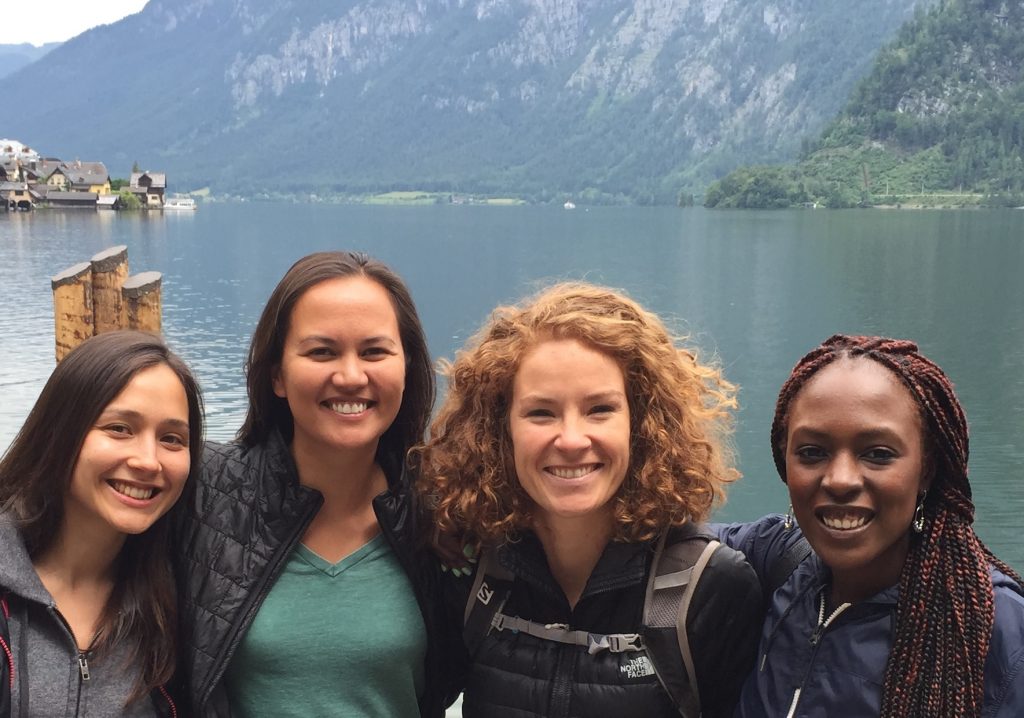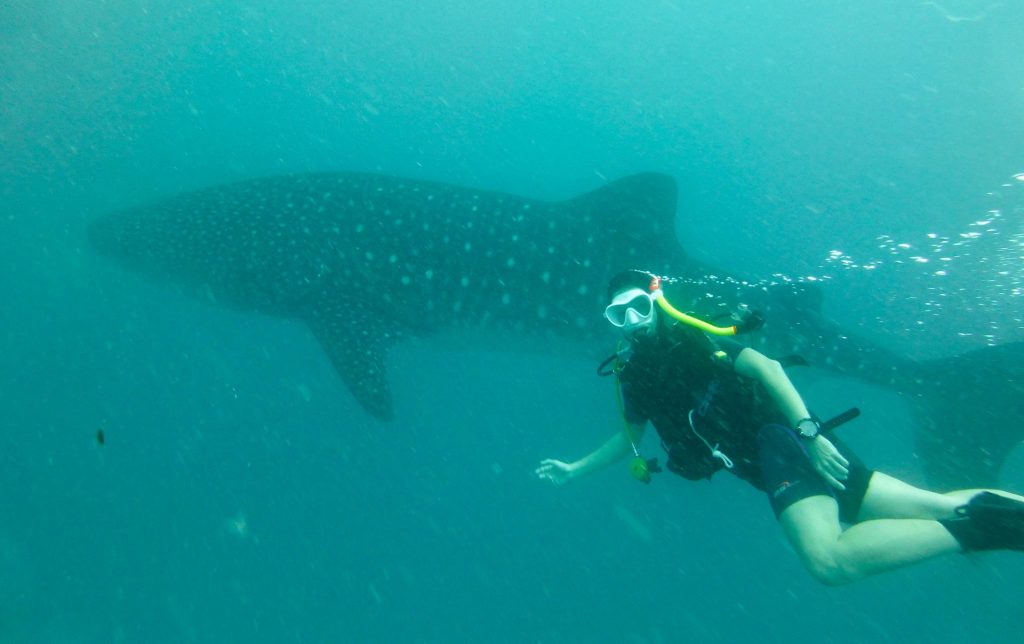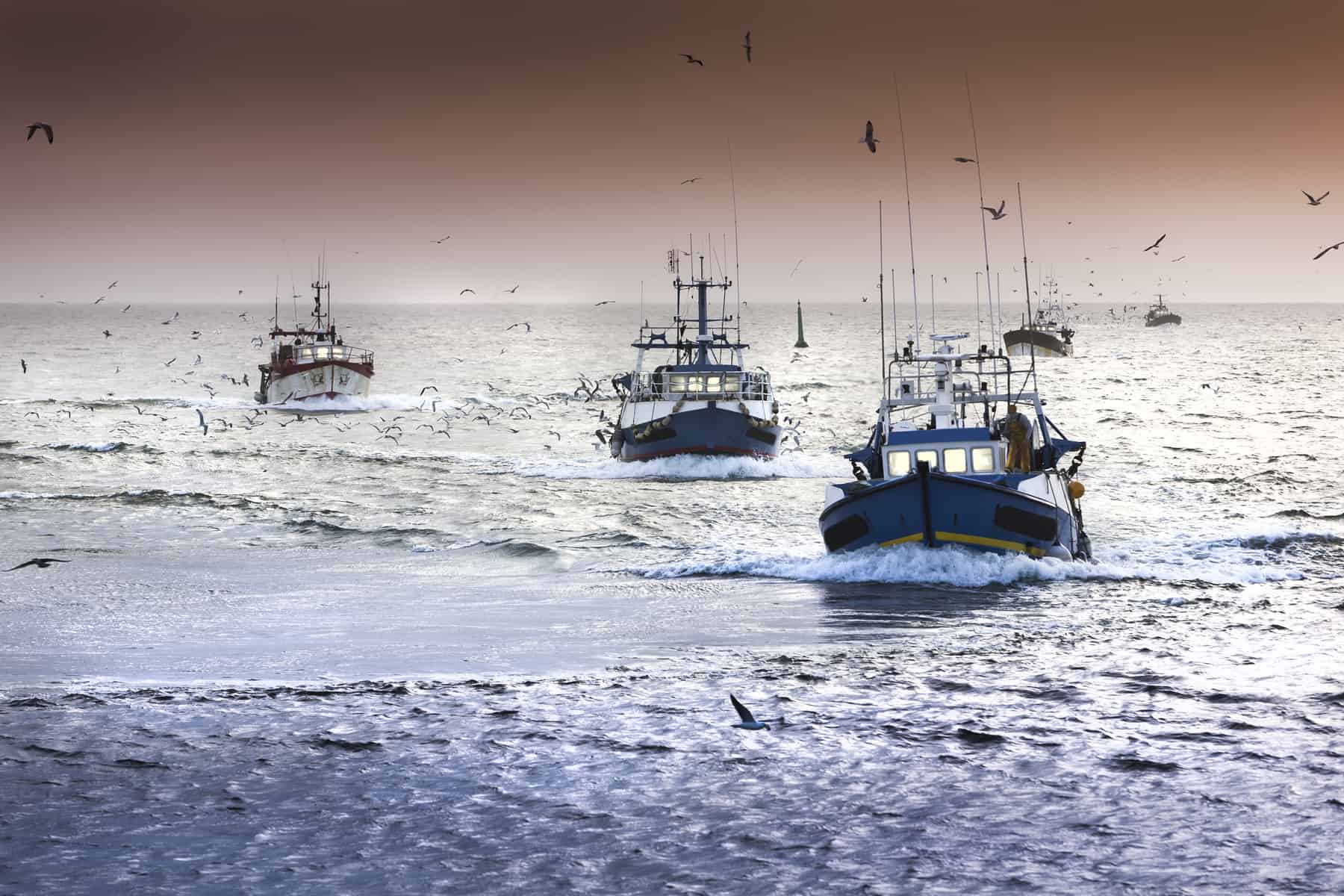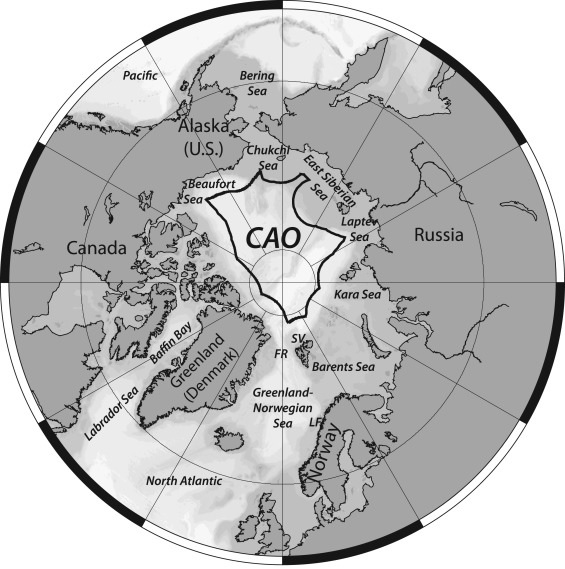Aug 19, 2016 | Science and Policy, Young Scientists
By Anneke Brand, IIASA science communication intern 2016.
For Malgorzata (Gosia) Smieszek it’s all about making sound decisions, and she is not afraid of using unconventional routes in doing so. She applies this rule to various aspects of her fast-paced life. Whether it is taking the right steps in trail running races, skiing or relocating to the Arctic Circle to do a PhD.

Gosia Smieszek © J. Westerlund, Arctic Centre
Gosia’s passion for the Arctic began to evolve during a conversation with a professor at a time when she was contemplating the idea of returning to academia. “I remember, when he said the word Arctic, I thought: yes, that’s what I want to do. True, before I was interested in energy and environmental issues, but the Arctic was certainly not on my radar. So I went to the first bookstore I found, asked for anything about the North and the lady, after giving me a very confused look, said she might have some photo books. So I left with one and things developed from there.”
In 2013 Gosia joined the Arctic Centre of the University of Lapland in Rovaniemi, Finland. Living there is not always easy, but hey, if you get to see the Northern Lights, reindeers and Santa Claus on a regular basis, it might be worth enduring long times of darkness in winter and endless sunshine in summer. With temperatures averaging −30°C, Rovaniemi is the perfect playground for Gosia.

Running is one of Gosia’s favorite sports. She has competed in a few marathons, but her biggest race to date is the Butcher’s Run, an ultra trail of 83km over the Bieszczady mountains in Poland. Here she is running in the Tatra mountains. © Gosia Smieszek
Gosia grew up in Gliwice, a town in southern Poland, before moving to Kraków where she completed her undergraduate degree in international relations and political science. This was just before Poland’s accession to the EU, so it was the perfect time to pursue studies in this field.
She continued her studies in various locations including Belgium, France, Poland, and Austria. Before continuing her education and later working at the College of Europe, she also gained working experience as a translator at a large printing house in her home town in Poland.
For her PhD Gosia focuses on the interactions between scientists and policymakers, with the aim of enhancing evidence-based decision making in the Arctic Council. Scientific research on the Arctic has been conducted for decades, but “when it comes to translating science into practice it is still a huge challenge―on all possible levels,” she says.
“Scientists and policymakers have their own, very different, universes—with their own stories, goals, timelines, working methods and standards. It is better than in the past, but still extremely difficult to make these two universes meet.”

Gosia with fellow YSSPers, Dina, Stephanie and Chibulu during a visit to Hallstadt. © Chibulu Luo
As part of the Arctic Futures Initiative at IIASA, Gosia investigates and maps the structural organization of the Arctic Council and aims to determine the effectiveness of interactions between scientists and policymakers, as well as ways to improve the flow of knowledge and information between them.
Because of the nature of her work, Gosia spends almost half her time away from home, but you will never find her traveling without running shoes, swimming gear, and something to read. Diving, one of her greatest passions, has taken her to amazing places like Cuba and the Maldives, where meeting a whale shark face-to-face topped her list of underwater experiences.

Gosia swimming with a whale shark. © Eiko Gramlich
Gosia is truly hoping to make a difference with her research on science-policy interface. She says: “To me, trying to bridge science and policy is a truly fascinating endeavor. Exploring these two worlds, seeking to understand them and learning their ‘languages’ to enable better communication between them is what drives me in my research. So hopefully we can learn from past mistakes and make things better—this time.”
Note: This article gives the views of the author, and not the position of the Nexus blog, nor of the International Institute for Applied Systems Analysis.
Mar 31, 2016 | Systems Analysis
By Melina Kourantidou, MSA 2015 participant, PhD student, Department of Environmental and Business Economics, University of Southern Denmark
In summer 2015 I participated in the Summer Academy on Economic Growth and Governance of Natural Resources in Lomonosov Moscow State University. I was inspired by the interdisciplinary lectures there as well as by recent developments in Arctic marine governance to propose a game-theoretical model for Arctic fisheries management.

While commercial fishing in the central Arctic Ocean is unlikely to become common anytime soon, fisheries management in the region includes complex decision making challenges. © Fernbach Antal – Fotolia | Dollar Photo Club
In July 2015, representatives from the five Arctic Ocean coastal states (Canada, Denmark, Norway, Russia and the United States) signed the Declaration Concerning the Prevention of Unregulated High Seas Fishing in the Central Arctic Ocean. In the declaration text it is clearly stated that “commercial fishing in the high seas portion of the central Arctic Ocean is unlikely to occur in the near future.” This approach increases the stature of the Precautionary Principle, a strategy that copes with possible risks in cases where scientific information is limited. The declaration is the first official attempt to regulate international waters of the Central Arctic Basin. While commercial fishing in the central Arctic Ocean is unlikely to become common anytime soon, fisheries management in the region includes complex decision making challenges, while it is also complicated by multiple factors, including transboundary fish stocks—those crossing boundaries of Exclusive Economic Zones (EEZs) — and straddling stocks (those typically found in the high seas adjacent to the EEZ) arising from the unsettled maritime boundary lines, thus often calling for the establishment of an effective bilateral or multilateral regime.
The contentious and divisive issue of how to handle Arctic fisheries has mostly been discussed so far in literature from a biodiversity standpoint rather than an economic one. Yet looking at the problem from an economic standpoint could help provide information that could prevent optimal use of resources and thus contribute to preventing irrational behaviors that may lead to the collapse or disruption of the ecosystem. Optimization theory provides critical insights for individual fishers or countries pursuing the most profitable strategy (higher payoffs). At the same time it can also prove useful for broader decision-making processes whereby all interested parties cooperate on the management of Central Arctic fish stocks.

A map of the Central Arctic Ocean shows the many countries that border the ocean. © Shephard et al., 2016
Game theory can potentially contribute in a more complex setting, with two or more actors—states in our case—involved in fishing resource management and with each state being able to choose among a set of available options, with their payoff dependent on other states’ choices.
There are a number of different types of games available in the game theoretical framework. Given the existing risks and uncertainties over Arctic marine resources I would propose a differential game setting as a baseline scenario. A differential game is a mathematical formulation used for either conflict or cooperation where players’ strategies are changing over time.
A differential game seems suitable since there is an underlying assumption that the “Arctic players” involved make decisions at all time points and not necessarily in specific time intervals. Furthermore a repeated static game (players deciding simultaneously with no prior knowledge of other players’ choices), such as the Prisoner’s Dilemma, would probably not work as well here, since the payoff functions of our players would not be time-dependent.
If we are looking for a solution where all involved Arctic states agree to cooperate on the management of marine resources in the Central Arctic, we would probably need to solve it as a standard optimal control problem, through the use of maximum principle or dynamic programming. In other words the outcome of optimizing a joint welfare function should be examined regarding its efficiency, which brings together the different Arctic players in a joint effort to maximize their average individual welfare.
Another theory known as Nash equilibrium could provide useful insights with regard to incentives and motivations, especially in cases, like the one described here, where it is rather daunting to predict how different players will behave in a game. A Nash equilibrium comes down to a set of different strategies for each one of the players included in the game, indicating that neither player has incentive to change their choice (taking others’ choices as given) since their payoffs are not improving anyway.
An open-loop solution that gives Nash equilibrium would result in all players having absolutely no incentive to deviate from their specific strategic path, given the path of other players or in other words having the players at a Nash Equilibrium would make them unwilling to act differently, since they would be worse off if they did.
An Open Loop Nash Equilibrium can be examined where there is exclusive dependence on the time variable; if a player deviates from the equilibrium control, even if briefly, and decides to return to its former behavior, the equilibrium is broken. Conversely, in a feedback (or closed-loop) Nash Equilibrium which is strongly time consistent, the dependence lies on the current state of the system. Differential games can generally help towards answering whether a potential cooperative solution can be achieved through a Nash equilibrium of a non-cooperative game.
Yet another question is whether countries would prefer to cooperate instead of competing for fishing in the Central Arctic. A cooperative scenario would require a Net Present Value (sum of benefits minus sum of costs, both in present values) larger than the non-cooperative scenario, thus covering the opportunity costs arising from the cooperative case. If this condition is not satisfied we will have to accept that there will be a non-cooperative behavior up to the point that cooperation turns lucrative for all players.
Game theoretic approaches with regard to stock management have provided useful insights and directed new lines of inquiry, but the dynamically changing Arctic raises issues that call for coordinated responses, for example through the use of more robust tools such as evolutionary game theory. Given that many species are expected to expand to yet unexploited parts of Arctic waters, one major concern is the consequences of coastal states’ harvesting activities on society’s wellbeing, and the ways in which it will be made possible to leave a positive legacy for future generations.
Looking at the interplay of ecology and economic behavior is one way that scientists can begin to answer these questions. Meticulous research on strategies of defection, cooperation and enforcement can be a cornerstone for establishing and managing effective ways to protect the Arctic marine environment, taking into account the current dearth of research in existing and future biodiversity.
Read my full report on the MSA 2015 Web site (PDF)
Note: This article gives the views of the author, and not the position of the Nexus blog, nor of the International Institute for Applied Systems Analysis.
Nov 7, 2013 | Energy & Climate, Science and Policy
Peter Lemke, head of the Climate Sciences Research Division at the Alfred Wegener Institute, Helmholtz Centre for Polar and Marine Research in Bremerhaven, Germany, is an expert on sea ice, a polar explorer, and the Chair of the IIASA Council. In this interview Lemke explains how climate change is affecting the Earth’s polar regions, and talks about a recent winter expedition to Antarctica.
On Monday, 11 November Lemke will give a public lecture on the topic at IIASA in Laxenburg.

Peter Lemke – Credit: Stephanie von Neuhoff (AWI)
How did you get interested in the cryosphere? What drew you to the poles?
When I was a young scientist, I was involved in climate modeling and especially the role of polar regions. For my PhD thesis I worked on sea ice extent data, trying to understand why we see changes.
That was in the late seventies, so it was not really climate change which was driving us, we just wanted to understand the climate system. Polar regions are an important part of the climate system. We tried to understand how they impact the other regions on the globe such as mid-latitudes and even the tropics.
When did you realize that climate change was affecting the polar regions?
Well the globe was already warming when I was starting my research in the mid-1970s. Sea ice was decreasing in extent, and ice was melting on the continents. Year by year, this trend became more significant. By the 1990s it was quite clear that there was a trend which was not just natural variation. The third IPCC report in 2001 just made it clear that man had an impact on the warming; at least a substantial part of it was due to increased greenhouse gases in our atmosphere.

A helicopter that was used to measure sea ice during Lemke’s 2013 Antarctic expedition. Credit: Peter Lemke (AWI)
What is happening now?
The changes we see now are even more dramatic than before, especially considering the Arctic sea ice. It hit a record low minimum in 2007 and we thought that this was the ultimate—as low as it would go. But then ice extent went even lower in 2012. While the ice extent this last summer was not quite so low, there is a strong trend in summer extent of sea ice. Our data indicate that it’s not just the extent but the thickness that’s changing. Measurements of sea ice thickness which our institute has performed over the last decade or so show a sharp thinning of the sea ice in the interior of the Arctic: The sea ice has thinned from an average of 2.5 to about 1 meter in only 10 years.
The other thing that is interesting is that the sea ice extent in the Antarctic is not decreasing at the same rate. On the contrary, it’s increasing in extent slightly. The question is of course is the ice mass also increasing, or is it just spreading out and thinning—like a dough that you roll out, getting wider but thinner?
How do you explain the growth in Antarctic sea ice, while Arctic sea ice is declining?
One explanation is that in the Southern Hemisphere the westerly winds are increasing, and through friction this drives the ice towards lower latitudes and the extent is getting a bit bigger. When the ice expands there is open water between ice floes, and it’s still cold enough in winter that ice freezes in the open patches.
There are other physical processes that may be involved, such as the heavy snow cover that blankets the Antarctic sea ice. Sometimes the heavy snow load submerges the ice floe underwater so that the interface of ice and snow is actually below sea level, and seawater drains into the snow and freezes. That may be one process, but there are others that are not really resolved yet.
We don’t yet have the answers to these questions, because there are very few measurements and you cannot deduce snow from satellite remote sensing data, yet. To find out, you have to go there and make measurements yourself. But winter expeditions are very rare. There are very few icebreakers that can actually go into the Antarctic winter into the sea ice. I have participated in four expeditions over the last 25 years: in 1989, 1992, 2006, and now 2013.

Working site during the 2013 Antarctic expedition. The wind chill was often between -50 and -60°C. Credit: Peter Lemke (AWI)
What did you find on your latest expedition?
Most of the data have yet to be analyzed. But from our early results, it looks like that the sea ice mass around Antarctica has increased slightly. Our measurements showed that the sea ice was more extensive, thicker and more densely packed as compared to our 1992 expedition, which was on the same track during the same season.
We have also observed a continuous warming in the deep ocean, which indicates that the warming trend that we see over the last couple decades is continuing. This indicates that the ocean has taken up a large fraction of the heat due to the increased greenhouse effect.
Why should people care what happens in the Arctic or in Antarctica?
Both polar regions are pristine regions not affected by humans as much as lower latitudes. Still you see the effects of mankind there. Once the sea ice is gone in the Arctic, we have lost an entire ecosystem which is adapted to the sea ice. Sea ice is a porous medium, and in the small cavities, there is rich life—tiny algae, crabs, krill—and this ecosystem supports an entire food chain up to the polar bear, whales, penguins that you find depending on which pole you are looking at.
Do you think that IIASA has a role to play in polar research?
IIASA is currently considering a new Arctic initiative, which could involve not just the climate system and the ecosystem but also the human system. Changes in the Arctic are already affecting people living at the coastlines. This coastline is made up of sand and ice, which is thawing. And as the sea ice is retreating, the coastline is now exposed to the increasing waves in the open ocean. Already now villages are already eaten up by the sea. At the same time, hunting grounds are changing for Inuit and other indigenous people who rely on sea ice for hunting. I think that’s something that IIASA can actually look at from a holistic view: human system, ecosystem, climate system.
What is one thing you want people to know?
Well often the poles, especially the Arctic, seem so far away that people don’t think that it is important for their lives. But if you have a polar storm coming from Svalbard, within two days it reaches the German coast, and within 10 days the entire Northern Hemisphere may be affected. The Arctic is only a few days away from us, and conditions that are changing in the Arctic will affect the climate conditions also in our region.

Emperor penguins spotted during Lemke’s 2013 Antarctic expedition. Credit: Peter Lemke (AWI)
-82.862752-135











You must be logged in to post a comment.